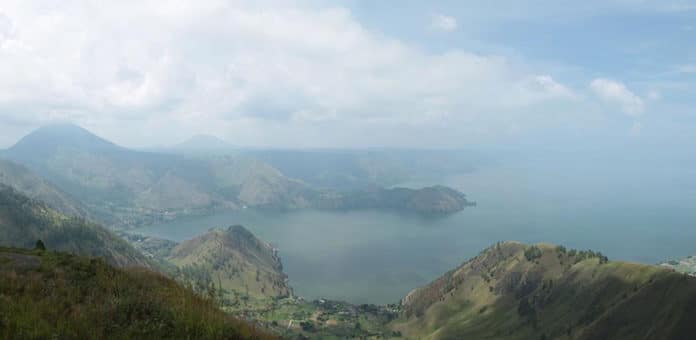Occured around almost 75,000 years ago; the Youngest Toba volcano was a supervolcanic eruption that likely caused severe climate disruption in many areas of the globe. However, the impacts on climate and human evolution have remained obscure.
Past climate models had suggested severe climate consequences, yet archaeological and palaeoclimate records from Africa don’t show such a dramatic response.
Using many climate model simulations, scientists from the University of Cambridge and Rutgers University solved this paradox: They found that early human populations were sheltered from the worst effects of the Toba catastrophe.
Lead author Benjamin Black from Rutgers University said, “Our results suggest that we might not have been looking in the right place to see the climate response. Africa and India are relatively sheltered, whereas North America, Europe, and Asia bear the brunt of the cooling. One intriguing aspect of this is that Neanderthals and Denisovans were living in Europe and Asia at this time, so our paper suggests evaluating the effects of the Toba eruption on those populations could merit future investigation.”
42 global climate models were analyzed, in which they varied the magnitude of sulphur emissions, time of year of the eruption, background climate state, and sulfur injection altitude to make a probabilistic assessment of the range of climate disruptions the Toba eruption may have caused.
Significant regional variation was detected in climate impacts. The simulations predict cooling in the Northern Hemisphere of at least 4°C, with regional cooling as high as 10°C depending on the model parameters. Also, even under the most severe eruption conditions, cooling in the Southern Hemisphere — including regions populated by early humans – was unlikely to exceed 4°C. However, areas in southern Africa and India may have seen decreases in precipitation highest sulphur emission level.
Co-author Dr. Anja Schmidt from the University of Cambridge said, “Our work is not only a forensic analysis of Toba’s aftermath some 74,000 years ago but also a means of understanding the unevenness of the effects such very large eruptions may have on today’s society. Ultimately, this will help to mitigate the environmental and societal hazards from future volcanic eruptions.”
Journal Reference:
- Benjamin A. Black et al. ‘Global climate disruption and regional climate shelters after the Toba supereruption.’ PNAS (2021). DOI: 10.1073/pnas.2013046118
